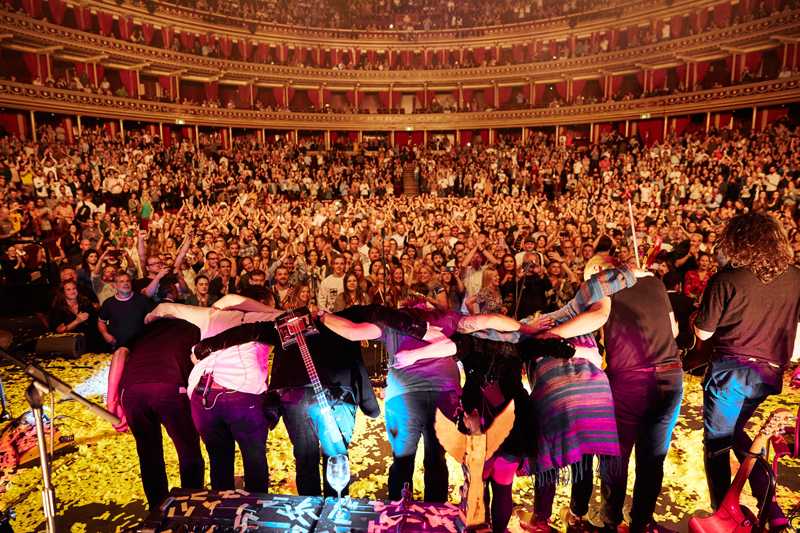L‑ISA meets challenges at the Royal Albert Hall
- Details

This June, UK and European production supplier for the Stones, Britannia Row Productions, gave Rhodes the opportunity to expand his audio horizons by trying out L‑ISA Hyperreal Sound technology. Not only was he to take on this new experience with little time to learn the L‑ISA system, he was to do it at the notoriously challenging Royal Albert Hall, a venue he had never worked in before. It was, he says, “a revelation”.
“I was offered the chance a few months before the show,” says Rhodes. “Brit Row’s Lez Dwight told me that there would be an L-ISA system in place for the Classic Brits at the RAH and, if I wanted to use the system, he knew that with my experience with multiple stem mixing - I have done a lot of mixing for film, the clarity of which I try and present with Angus and Julia - this would be a perfect gig for it and he thought I’d enjoy it, so I agreed to give it a go.”
Before the show, Brit Row invited Rhodes to spend a day getting to know L‑ISA in one of its production suites, where they set up a small mock rig, enabling him to programme his Avid S6L console, do a mock set up and play with the system.
The L-ISA system, which was also used for the Classic Brits later that same week, comprised five arrays of 15 Kara each positioned above the stage as a frontal system, with additional side hangs of two arrays of 10 Kara. Six X8 and four SB18 provided front-fill, with a further six X8 providing additional fill for the stalls. The entire system was driven by a total of 27 LA12X Amplified Controllers.
This was new ground for Rhodes and he went into the show keeping his own expectations in check. “L-Acoustics’ Sylvain Biguet was with me on the day,” Rhodes remarks. “As we were a month into a tour and I’d never used L-ISA before, my main goal in the production suite was to have a show that was similar to the one I already had, so that I didn’t feel I was going backwards.”
Although Rhodes had no reference point for the venue, he didn’t find reverb times an issue, experiencing a natural amount of reverb in the room and not feeling like he was fighting the room.
“It worked fantastically,” he enthuses. “I loved having the phantom centres of hangs two and four and being able to use the centre hang to cut through the phantom like a blade was fantastic. It wasn’t until a week or so after the gig that the enjoyment of using L‑ISA had really sunk in and I think we achieved much more than my original goal.
“The whole concept of immersive audio is fun and exciting. We’ve had massive advancements in lighting technology over the last 10-15 years. It’s so good to see a new step forward in audio presentation. I don’t listen to a stereo anymore at home, I listen to the surround sound system and now, hopefully, I can do the same thing in my working environment. This is game changing.”
(Jim Evans)













